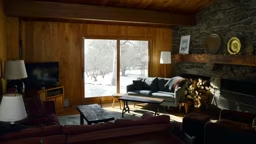
Mother Nature shows her force in many ways, but not often so insidiously as when she moves an ice floe. One day, you’re looking at your dock, eerily quiet in the dead of winter. A week later, it’s been moved a few feet and now looks like an old run-down boardwalk or even a pile of splintered lumber. Here’s how you can prevent damage.
Autumn out & spring in
Though the actual job of annual dock removal and reinstallation can be a pain, it’s only two days out of the year. If your dock’s built for it, removal can actually be pretty painless. Many types are designed and purpose-built for easy removal and installation. Roll-in-and-out types are easy for a couple strong people to maneuver. Floating piers are also lightweight, easy to position, and very portable.
Standing docks (those that rest on the lake bottom) can be tougher. Depending on how many sections you have and how much of a perfectionist you are, obtaining a straight and level installation in spring can take a few hours to most of a day.
Removal in fall, no matter what type of dock you have, typically will go more quickly than spring installation.
See also Choosing the Best Dock For the Cabin
Before You Bubble
Many areas have bubbler/de-icer restrictions and protocols. For example, many lakes in New Hampshire and Minnesota require adequate signage to warn ice skaters and others that a bubbler is in use. Some townships, municipalities and lake associations have ordinances that spell out specific rules about the use of bubblers, so check with your local authorities before purchasing and installing a bubbler.
Bubbling the ice away
The alternative to dock removal is, obviously, leaving it in the lake for the winter. If your dock’s heavy, or not really built for removal and reinstallation, consider bubbling.
Bubblers, or de-icers, come in two basic types:
-
Most common and simple are “ice eaters.” These use a waterproof electric motor turning a plastic propeller, surrounded by a tube enclosure. Positioned properly, ice eaters suck warmer water up from the lower depths and push it back at the dock. This breaks up ice and keeps more from forming.
-
Others use an electric air compressor and weighted, perforated tubing that lays on the lake floor around the dock perimeter. The compressor circulates air through the tubing; the air jets through perforations, creating bubbles that prevent ice formation.
Both systems are typically set to operate on timers and thermostats. Operating them full time is not needed and wastes energy.
The bubbler’s archenemies
There are three primary enemies that can thwart your bubbling efforts:
-
Ice that’s allowed to form around the dock legs during deep freezes. As the ice heaves and expands, it will move and possibly damage the dock.
-
Moving ice floes during ice-out. Moving ice floes will absolutely decimate anything in their path, including your dock.
-
Mechanical failures or power outages. Bubblers are mechanical devices, and they can fail. Failure can mean dock damage.
If you can’t get up to your property on a regular basis during the winter, it pays to ask a year-round neighbor to check on the dock and bubbler, especially during midwinter deep freezes and late-winter ice-out.
Removing Vs Bubbling
A bubbler or de-icer can keep your dock (and boat lift/hoist) ice-free. But you may rest more easily knowing your dock has been removed and is safely up on land.
See also Should You Build Your Own Dock?










